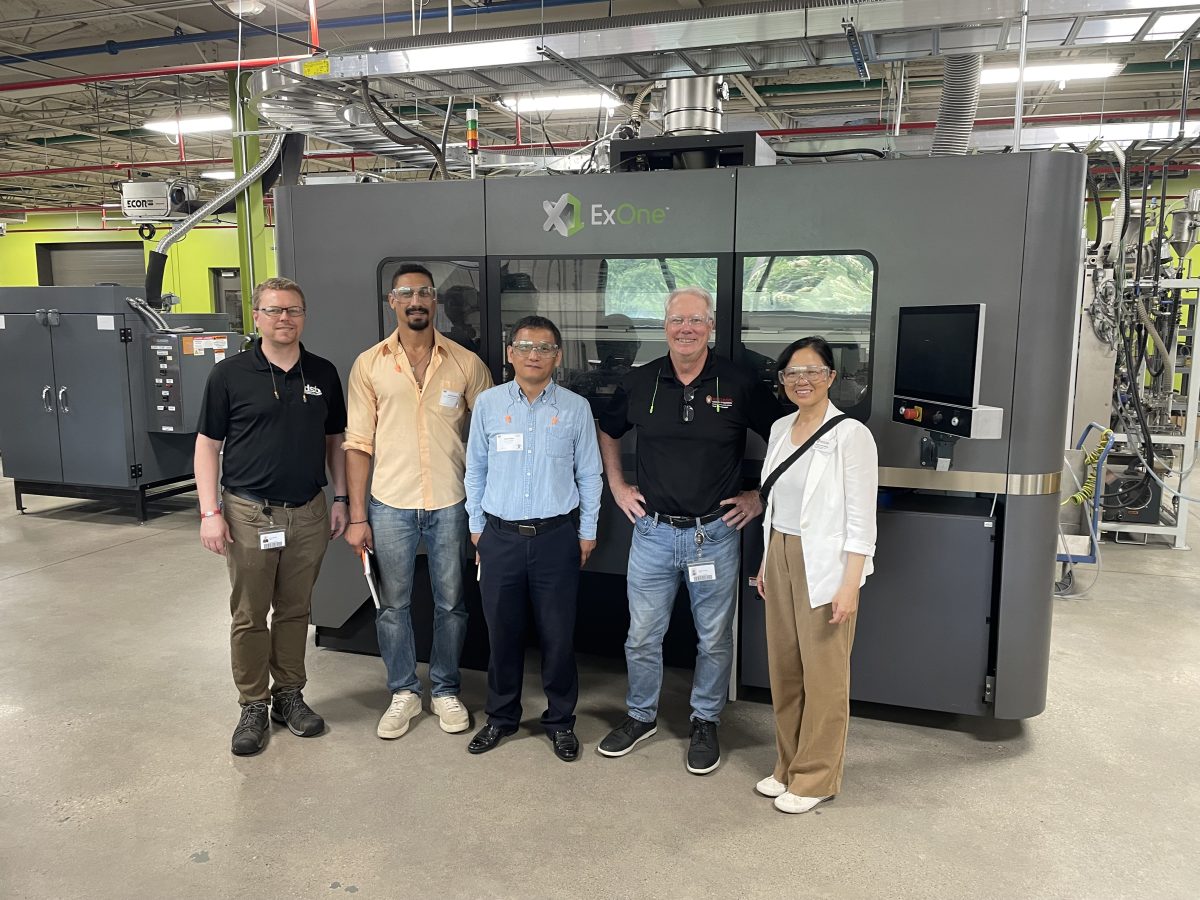
Through our UW WISER award data analysis, you emerged as a top faculty member with a high number of industry-sponsored awards. Could you walk us through your industry-sponsored projects and share why you conduct industrial collaborations?
Dr. Chen: Thank you for reaching out. I have always been motivated to learn about the industry’s needs for new solutions to societal problems. Their ideas have inspired me to advance my research by developing proposals for federal grants.
For example, one industrial collaboration journey began with a Department of Energy (DOE)-funded project, where the University of Wisconsin was a subcontractor responsible for developing 3D printing approaches. The federally funded project led to subsequent industry-sponsored projects. Encouraged by the positive outcome of those collaborations, I am always interested in finding more industrial partners with mutual interest, learning their needs, developing the technologies, and bringing a win-win to key stakeholders.
So, your federally funded project resulted in privately funded projects. What are the main technologies you’re developing now?
Dr. Chen: We’re developing cryogenic steels—strong, ductile materials that operate at extremely low temperatures, crucial for superconducting magnets in fusion devices. We’re also pioneering ways to print tungsten components using 3D printing technologies, which must withstand plasma at millions of degrees Celsius for applications under these extreme conditions. Each application, whether cryogenic steel or plasma-facing tungsten, demands a unique approach.
How do you navigate industry collaboration, and how do these partnerships evolve?
Dr. Chen: The industry moves fast, and adaptation is the key to success. For example, a company initially wanted to use novel alloys, needing our metal powder-based printing technologies. Then, the company shifted back to conventional materials and processes. Such a strategic change also impacted our project direction. Due to our flexibility and open-minded communication, we have maintained a strong relationship with the company throughout the years.
While working at my previous university, I collaborated with Boeing to explore additive manufacturing process qualification under certain IP agreements. I could not continue that partnership after joining UW–Madison, since negotiating the same IP terms proved formidable.
Speaking of master research agreements with industry, do you have any expectations for our Office of Corporate Relations? What about consortia such as AMIC?
Dr. Chen: The Office of Corporate Relations is vital in helping university professors make industrial connections. Some of us do not know the industry that well, and we could not reach out effectively. Having master research agreements in place makes it much easier for faculty to work with large companies. OCR can pave the way for IP negotiations and support our grant applications.
For example, my postdoc and I are going through the NSF Innovation Corps Entrepreneurship training project, which requires interviewing at least 100 potential customers to confirm our value propositions on the market. I am grateful for Xiujuan’s role as our industrial mentor, making so many meaningful connections and arranging company site visits. The site visits allowed us to have in-depth conversations with companies, truly understanding their detailed needs, which is critical, in addition to the communication conducted during virtual meetings.
Consortia are invaluable. They bring companies to campus, foster networking, and create opportunities for collaborative projects and student recruitment. Russ has involved me in several company visits to our campus, and I have established valuable connections.
Key Takeaways for Researchers
Advice for other PIs seeking grants from industry and private entities:
- Build strong industrial networks and align research activities with industry’s interests.
- Leverage connections, for example, involvement with one large grant came through a colleague’s referral.
- Seek industrial funding that aligns with the university’s focus on science, graduate student education, and publications.
- Take advantage of OCR that can help streamline IP processes and foster connections that open doors to industry—this support is critical for innovation.
The College of Engineering’s Office of Corporate Relations proudly supports faculty connecting with industry to create impactful partnerships. If you are a faculty member interested in being featured in a future Faculty Spotlight, please contact us at Xiujuan.zhang@wisc.edu, jfitzgibbon@wisc.edu, or russ.johnson@wisc.edu.